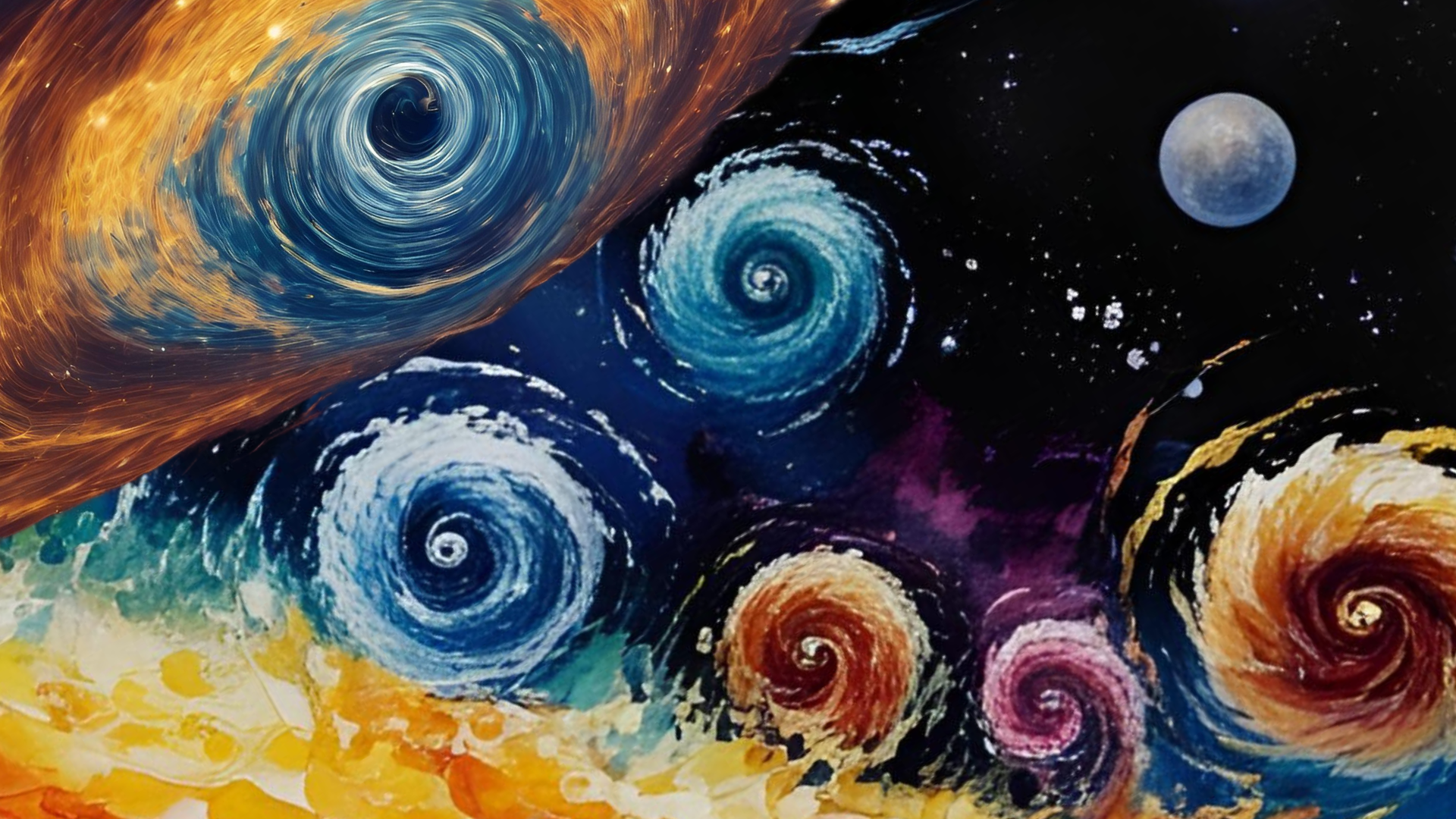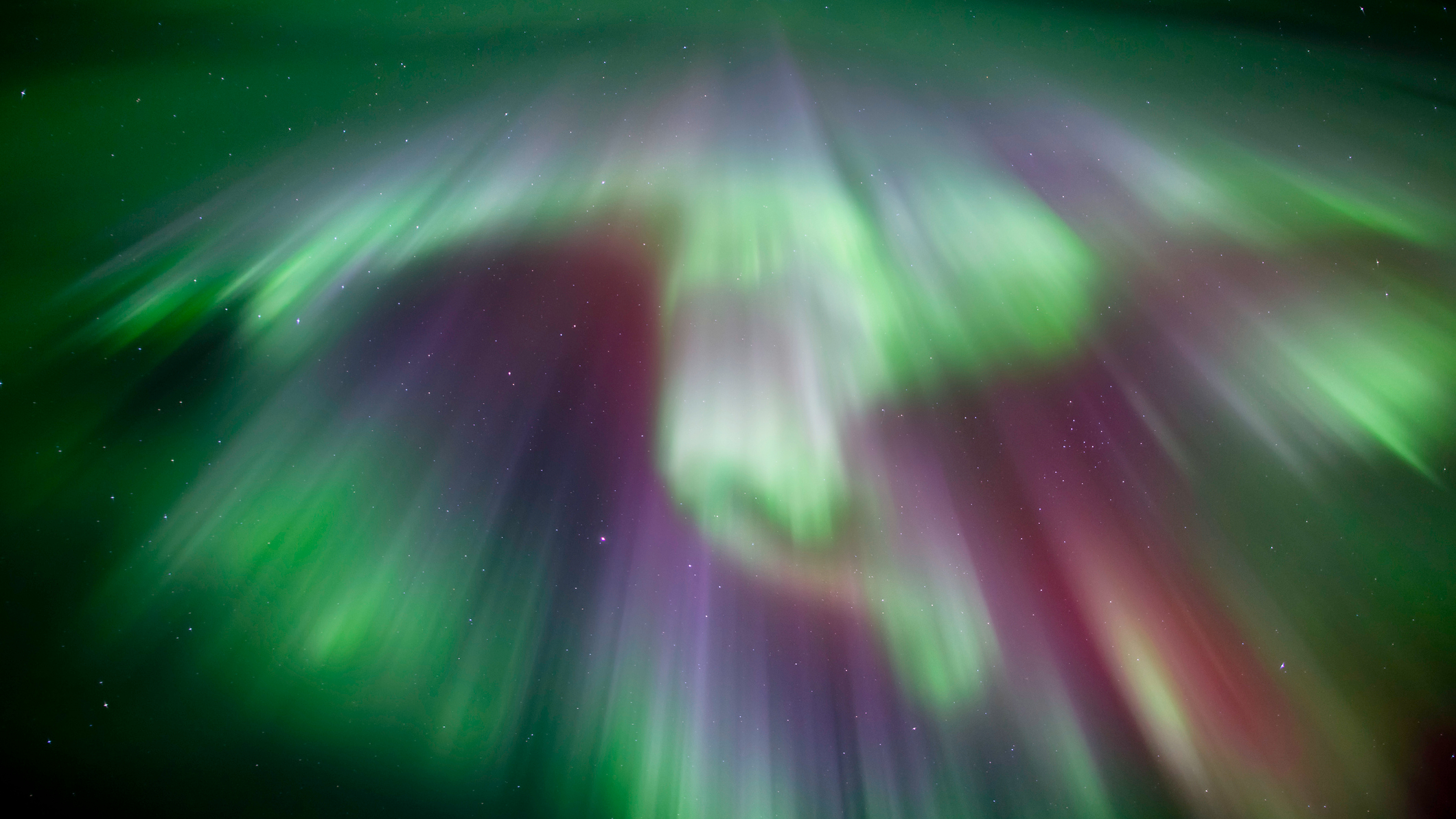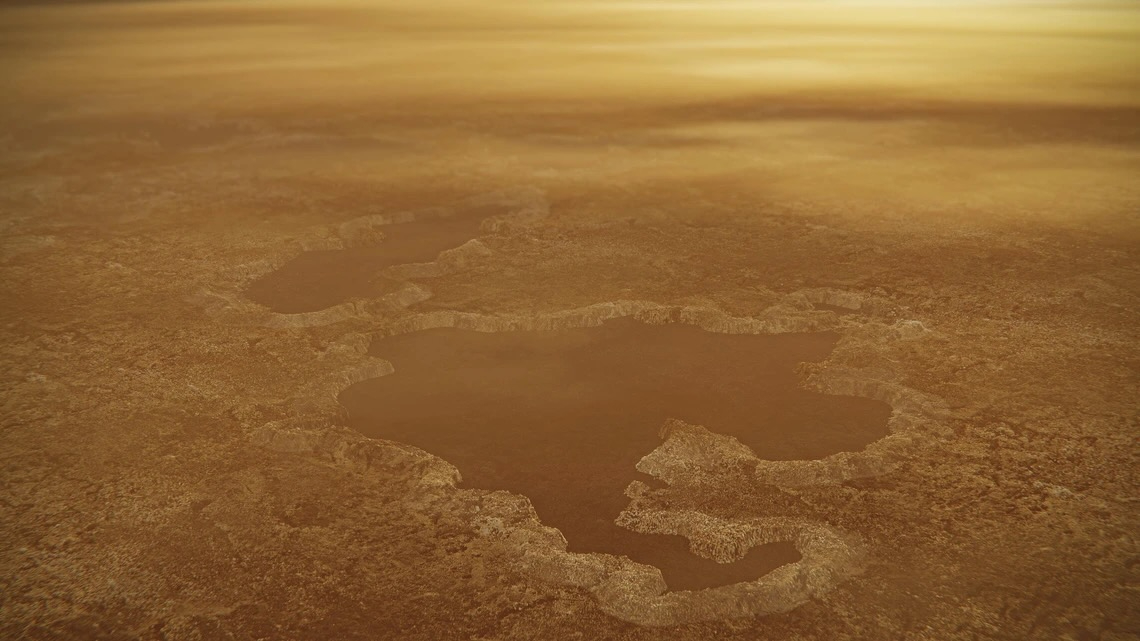The north pole of Jupiter has mesmerizing storms, new Juno images reveal
Scientists are trying to figure out what gives those storms their color and shape.

Powerful storms around the north pole of Jupiter swirl in stunning new images captured by NASA's Juno probe during its close approach to the giant planet on July 5.
The storms reach depths of over 30 miles (50 kilometers) in the turbulent atmosphere of Jupiter and are hundreds of miles wide, NASA said in a statement. Scientists are studying these storms to understand what drives their formation and gives them their striking and unique features.
Past observations of Jupiter have shown that these cyclones vary in color based on the direction in which they spin, as well as on their location. For example, storms that spin counter-clockwise in Jupiter's northern hemisphere and those that spin clockwise in the southern hemisphere have distinctly different shapes and colors to those spinning clockwise in the north and counterclockwise in the south.
Related: Jupiter, too! New James Webb photos show giant planet's rings, moons and more
Juno, which launched in 2011 and reached the gas giant five years later, took the images during its 43rd close flyby at Jupiter on July 5, NASA said in the statement. The probe circles Jupiter in a highly elliptical orbit, completing one lap every 43 days. At its closest, Juno approaches within about 3,100 miles (5,000 kilometers) of the tops of Jupiter's clouds. This particular image was taken when the probe was at a distance of about 15,600 miles (25,100 kilometers) from the planet.
The Juno mission, originally planned to retire in 2021, was extended last year to at least 2025. During its remaining lifetime, the probe will continue its focus on Jupiter's fascinating atmosphere, and will also study the planet's mysterious moons Ganymede, Europa, and Io, some of which may host microbial life.

In the meantime, NASA asks space enthusiasts and citizen scientists to help categorize the images of storms and other atmospheric phenomena captured by Juno's JunoCam instrument as part of the Jovian Vortex Hunter project. Anyone with access to a cellphone or a laptop can contribute to the analysis. So far, over 2,400 volunteers made classifications of over 375,000 images as part of the project.
Get the Space.com Newsletter
Breaking space news, the latest updates on rocket launches, skywatching events and more!
Follow Tereza Pultarova on Twitter @TerezaPultarova. Follow us on Twitter @Spacedotcom and on Facebook.
Join our Space Forums to keep talking space on the latest missions, night sky and more! And if you have a news tip, correction or comment, let us know at: community@space.com.

Tereza is a London-based science and technology journalist, aspiring fiction writer and amateur gymnast. Originally from Prague, the Czech Republic, she spent the first seven years of her career working as a reporter, script-writer and presenter for various TV programmes of the Czech Public Service Television. She later took a career break to pursue further education and added a Master's in Science from the International Space University, France, to her Bachelor's in Journalism and Master's in Cultural Anthropology from Prague's Charles University. She worked as a reporter at the Engineering and Technology magazine, freelanced for a range of publications including Live Science, Space.com, Professional Engineering, Via Satellite and Space News and served as a maternity cover science editor at the European Space Agency.









